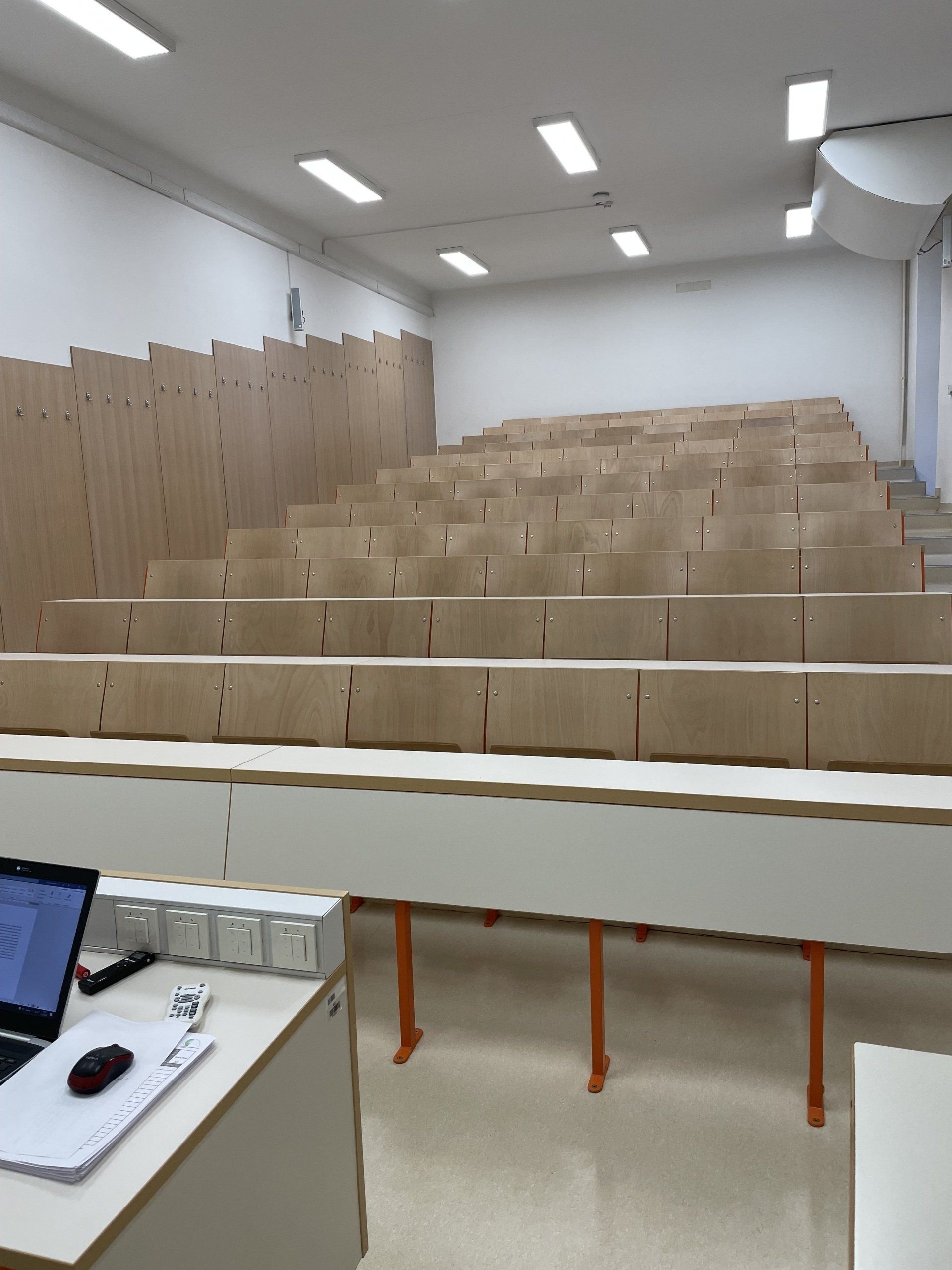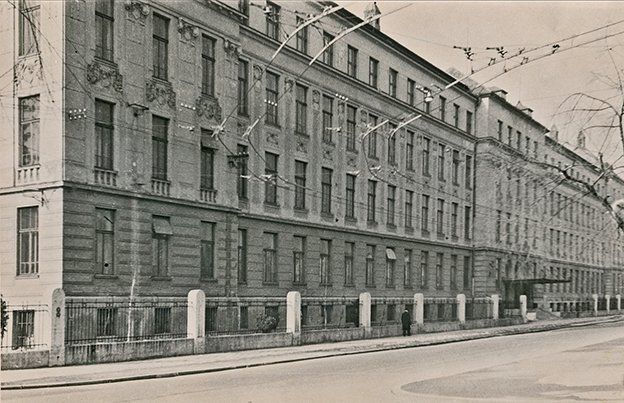My school
Everyone at our school understands that it is our job to present all the contents of each study programme to students in the most interesting, innovative and creative way, and to create the environment for students where they feel comfortable.
We provide excellent lecturers from the industry, who are best placed to provide the necessary knowledge, skills and competences. The special feature of the post-secondary course is precisely that it produces, through its practical orientation, project work and contact with companies, the most resourceful, broad and flexible professionals possible. When asked what kind of graduate they want, employers regularly reply that they are looking for a profile that is flexible, communicative, resourceful, honest, hard-working, teachable, etc. They say that if he or she has all of these characteristics, he or she will also quickly learn the specifics of a particular company's profession.
Our aim is that the knowledge and education acquired contribute to the achievement of the students' goals related to their future work or their further studies. We will do our best to carry out our activities in a professional and professional manner, to keep abreast of developments and innovations and to be committed to each individual. Above all, we want to achieve a high level of knowledge and employable graduates.
OUR VISION
Providing useful knowledge in a relaxed atmosphere and to facilitate contacts with different companies.
Post-secondary studies
Higher education is the pinnacle of vocational education and is therefore very practical. Graduates thus have a good understanding of their profession, but on the other hand they have more versatility, flexibility, initiative and professionalism than technicians.
Our economy needs such operational professionals, as confirmed by data on the employability of the graduates of vocational training colleges.
This is why a new technical college makes sense and is beneficial.
Materials design
Our Materials Design programme gives you both a good design foundation and the knowledge of how to make your ideas work. This gives you more freedom and independence to create new products. You will be able to design original useful or artistic objects from a variety of materials that can also be manufactured efficiently!
To give you a better insight into your profession, you will work on various projects for the economy during your studies.
Our vital task is to give you as much freedom as possible in your creativity.
Mechatronics
The programme combines three different fields: mechanical engineering, electrical engineering and computer science. Unfortunately, being an expert in only one area of expertise is no longer enough. Nowadays, due to increasing complexity of manufactured products, the machines are being partly or completely automated, or controlled by a computer. Having experts who have mastered all these skills at the same time, makes it much easier to design simpler, more reliable and versatile production systems.
These acquired skills make graduates of mechatronics very attractive to employers, as they are typically well-rounded professionals who are therefore able to design and plan innovative, functional and new products. They are employable in a wide variety of sectors of the economy, where the need for more functionality is increasing constantly.
Library
We have a very spacious and modern library with a wide selection of books for class as well as leisure. In our reading room. students can do their research papers, homework, as well as use a photocopying machine to make copies if needed.
Modern equipment
We use the classrooms of ŠC Ljubljana, laboratories and workshops, which are modernly and very well equipped. Thanks to the good cooperation with the Šiška Technical High School, we also use their modern laboratories in the Mechatronics programme. There is an updated robotics classroom, where we use ABB robotic cells, as well as a Fanuc Education 4 robotic cell and an industrial welding robot at the Ljubljana School of Mechanical Engineering.
ŠC Ljubljana can boast with excellent mechanical engineering and woodwork workshops. Moreover, all laboratory classrooms and computer rooms are equipped with modern software.
Online classrooms
The website of all schools at ŠC Ljubljana, as well as vocational colleges, has been updated this year. It provides us with basic information and news, and all students are registered in the Moodle online classroom or e-index, where they can sign up for exam deadlines with their passwords. Moreover, it enables our lecturers and students to communicate in an online classroom or through the school's website.
History of our school
Since 1911, the school building of the former National School of Crafts on Aškerčeva Street in Ljubljana has provided space for various educational activities. With the help of the then Mayor of Ljubljana, Ivan Hribar, and the first headmaster, Ivan Šubic, Slovenians were given their own secondary school, where the language of instruction, from the very beginning, was Slovene. The variety of programs sought to raise the development of the craft and technical industries, in Kranj and in the other lands of the Austro-Hungarian Monarchy, where the Slovene nation lived, to a European level.
The first departments of the school of crafts in the monarchy at that time focused on building construction, mechanical-technical (metal) crafts, building and furniture joinery, wood and stone sculpture, and the Public School of Drawing and Modelling and the Women's School of Crafts operated as fully autonomous schools.
After the end of World War I, in 1920, the school was renamed and transformed into the Technical High School in the new country of the Kingdom of SHS. The level of instruction and education was raised, but students who successfully completed their studies at the Technical School could not, according to the legislation of the time, continue their education at university. The following institutions were operating at that time: The State Technical School with an architectural-construction, mechanical and electrical engineering department, the State School of Master Craftsmen with a construction, mechanical, electrical, carpentry and wood-turning department, the State School of Men's Craftsmen with a sculpture, carving, ceramics and engraving department, the State School of Women's Craftsmen with three departments for tailoring, sewing and embroidery, and the Banovina School of Musical Instruments.
After the Second World War, the need for technical professions in the fields of chemistry, mechanical engineering, woodworking, electrical engineering and civil engineering grew in parallel with the growing industrialization. Vocations in these fields were educated at Aškerčeva Street and at the branch offices in Nova Gorica, Novo mesto, Kranj, Postojna, Celje, etc.
With social and economic development, vocational education has also changed, new schools have been established, programs changed and improved. The new social situation dictated a different organisation of schools or institutions, and in 2000 the Ljubljana School Centre was established with a single administration and four independent units.
The Higher Vocational School, which is based at the Ljubljana School Centre, successfully cooperates with four schools: the Ljubljana School Centre, the Secondary Vocational and Technical School Bežigrad - Ljubljana, the Secondary School of Construction, Geodesy and Environmental Protection Ljubljana, and the Secondary School of Engineering Šiška.
Arrival to school is quite easy. City bus or Trola number 1, 2, 3, 6, 9, 11, 19, 27 long distance buses from Vrhnika or Grosuplje take you directly to school.






